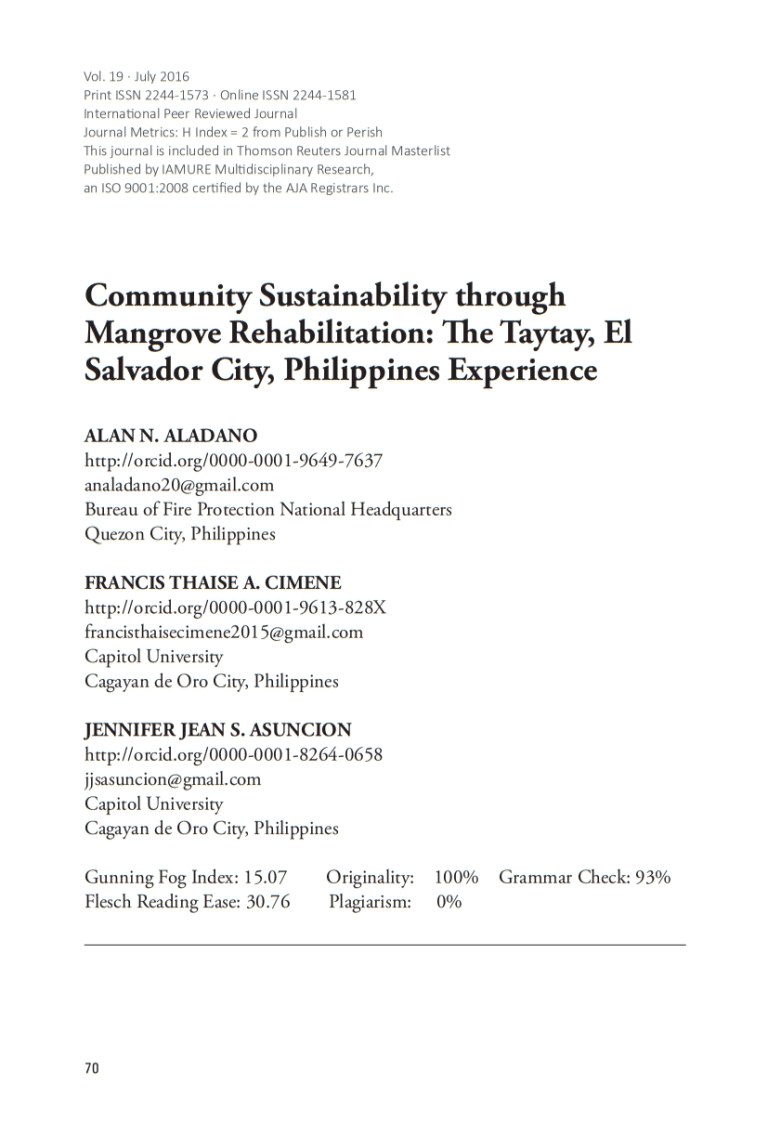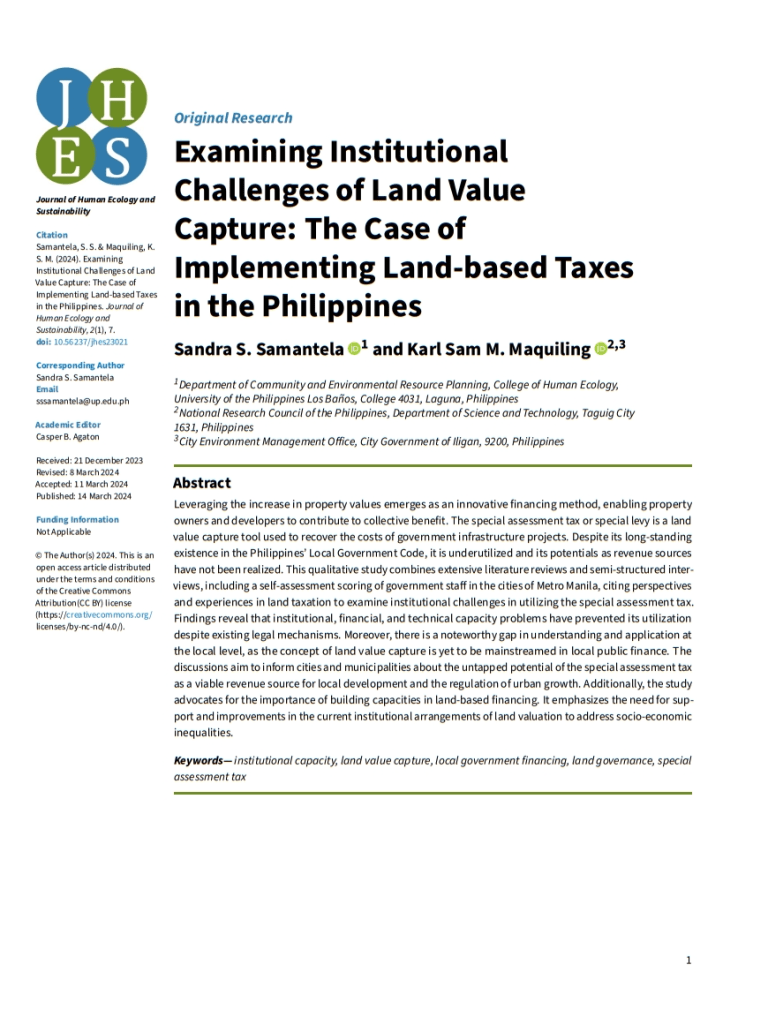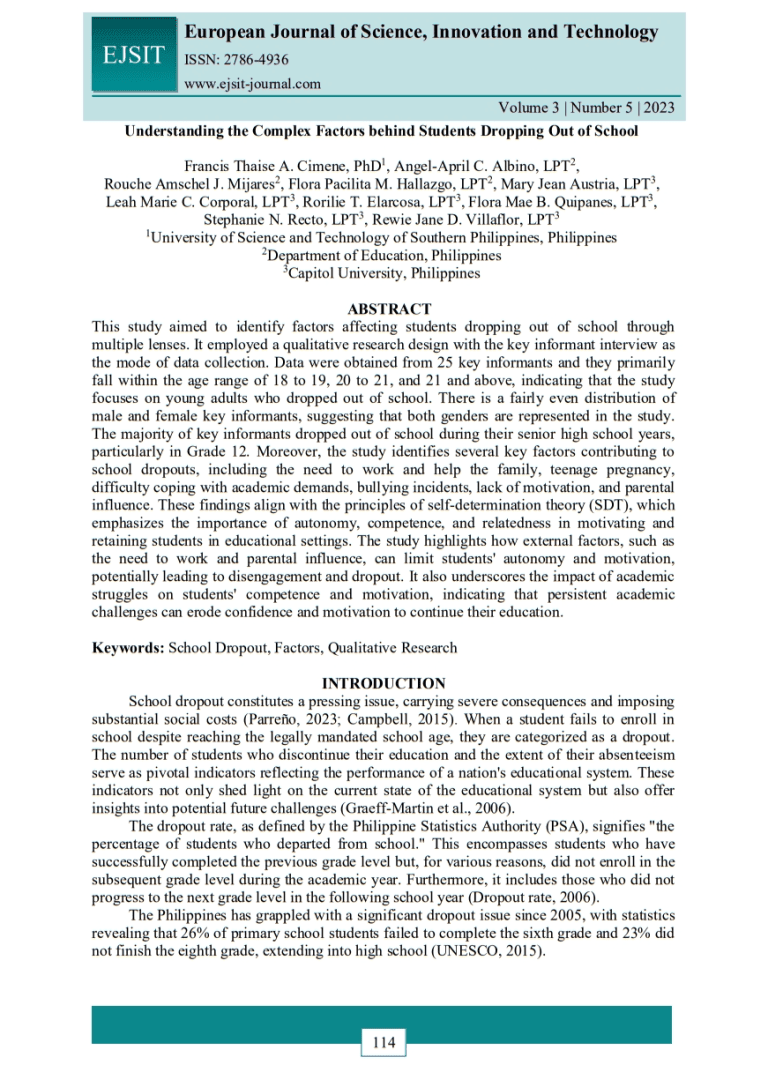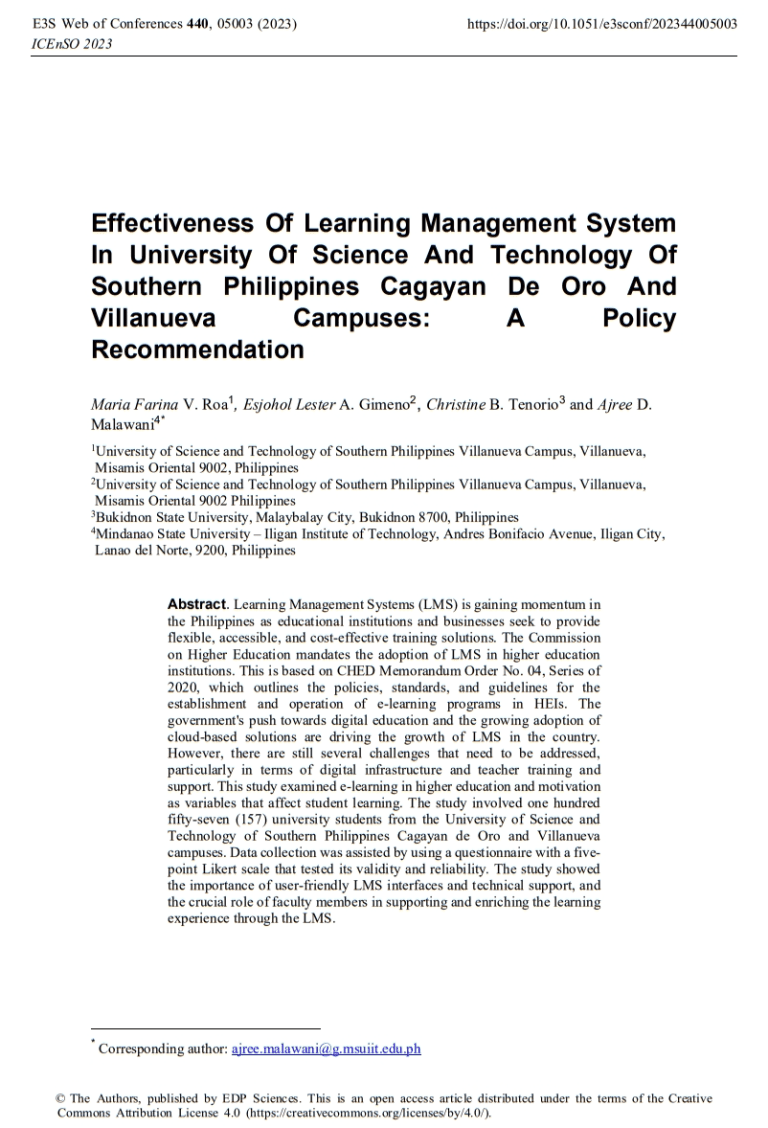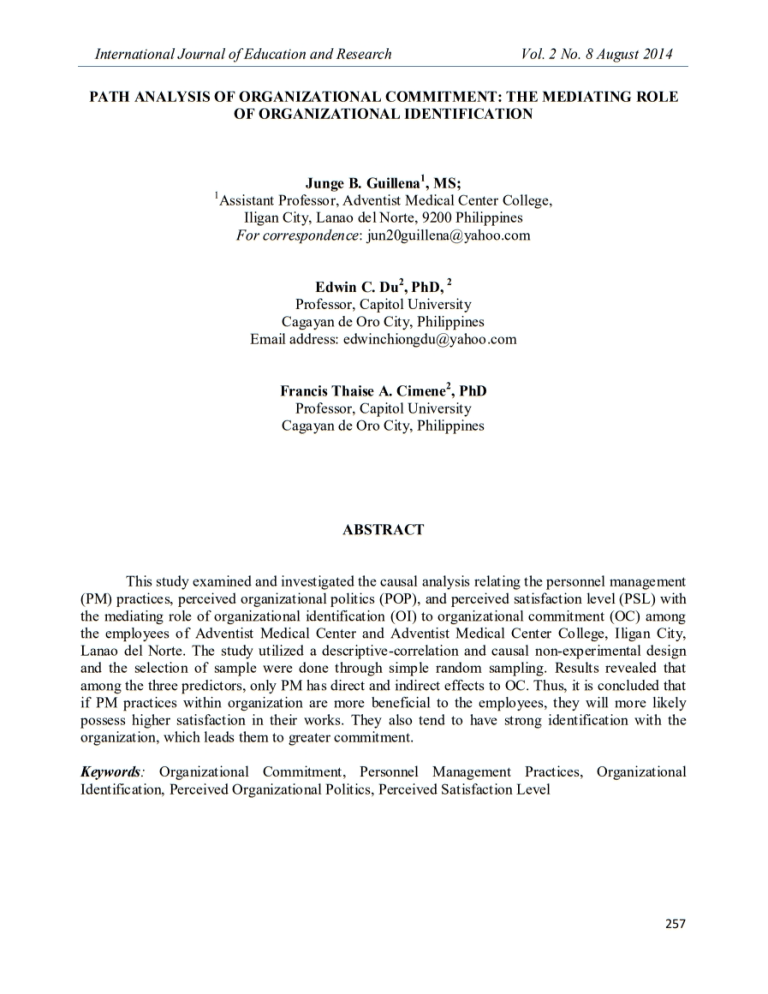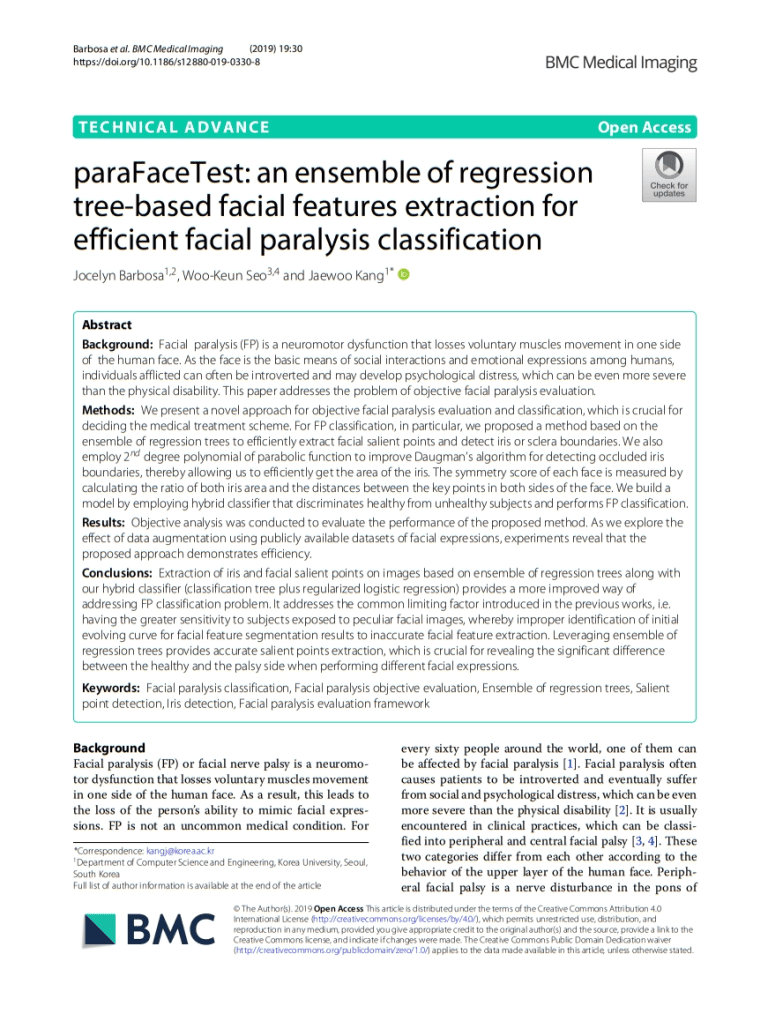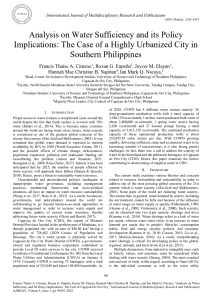

Published: Jun 30, 2022 | Updated: May 02, 2024
Online): 2581-6187Analysis on Water Sufficiency and Its Policy Implications: The Case of Cagayan De Oro City
Authors: Dr. Francis Thaise Roxan G. Eupeña, Joycer M. Elayan, Hannah Mae Christine B. Napitan and Ian Mark Q. Nacaya climate change adaptation, climate literacy, sustainable, waterAbstract
Proper access to water remains a complicated issue around the world despite the fact that Earth surface is covered with 70% water (Khatri et al., 2014). This is because many countries around the world are facing water stress, hence, water scarcity is considered as one of the greatest global concerns of the twenty-first century (Abu-Zeid and Shiklomanov, 2003). It was estimated that global water demand is expected to outstrip availability by 40% by 2030 (World Economic Forum, 2011), and the possible effects of climate change, deforestation, population expansion, pollution and inadequate funding are exacerbating the problem (Adom and Simatele, 2021; Rosegrant et al., 2009; Rieu-Clarke, 2017). Indeed, it has been anticipated that by 2025, the number of people affected by water scarcity will approach three billion (Hanjra & Qureshi, 2010). Hence, poses a threat to sustainable water resources.






